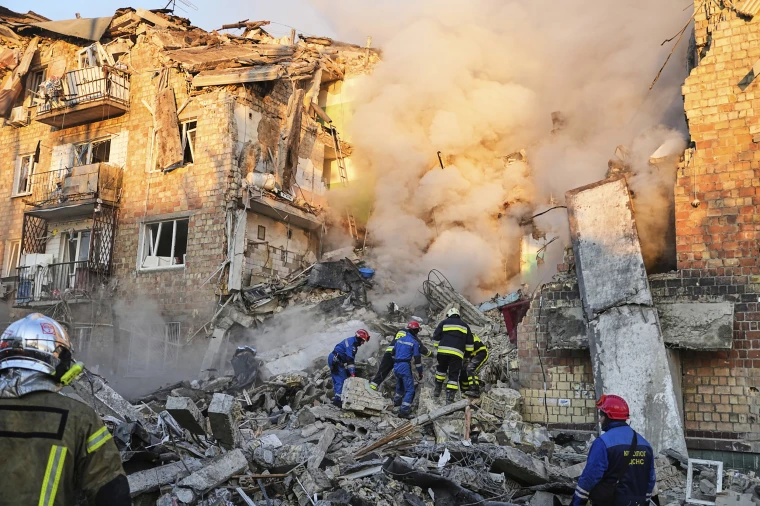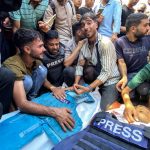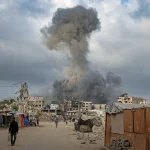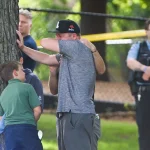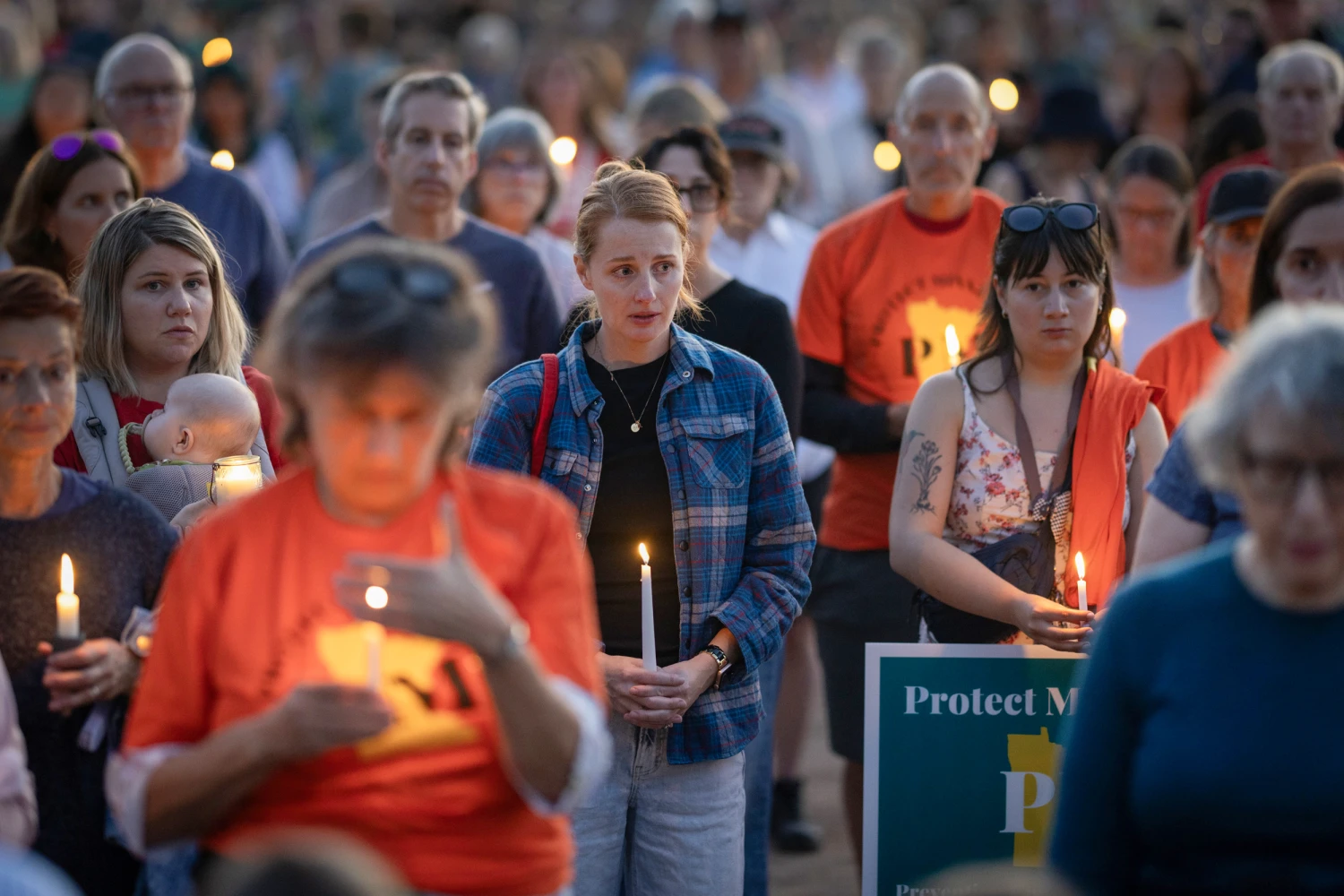The war in Ukraine has entered yet another bloody chapter as a Russian strike on Kyiv killed at least 15 people and left dozens more injured. This latest attack on the capital underscores both Moscow’s determination to pressure Ukraine militarily and the apparent deadlock in global peace efforts. Former U.S. President Donald Trump, who has publicly positioned himself as a potential broker of peace between Russia and Ukraine, has faced significant hurdles in advancing his initiative. With civilian casualties mounting, diplomatic channels stalling, and battlefield dynamics shifting, the tragedy in Kyiv raises critical questions about the future of the war, the feasibility of peace talks, and the role international powers can play in resolving the conflict.
This article provides a comprehensive breakdown of the incident, explores Trump’s faltering peace push, examines the global reaction, and considers what may lie ahead for Ukraine, Russia, and the wider world.
The Strike on Kyiv: What Happened?
According to Ukrainian officials, Russian forces launched a barrage of missiles targeting Kyiv in the early hours of the morning. Air raid sirens blared across the city as residents rushed to shelters, but at least one missile penetrated Ukraine’s air defenses, striking a residential area.
Fifteen people were killed, including women and children, and over 40 others sustained injuries ranging from minor cuts to life-threatening wounds. Entire apartment blocks were reduced to rubble, while emergency workers dug through the debris in search of survivors.
President Volodymyr Zelenskyy condemned the attack, calling it “another act of terror against the Ukrainian people,” and vowed retaliation. For Kyiv’s weary residents, the strike is another reminder that the capital, despite months of relative calm, remains within Russia’s deadly reach.
Civilian Toll of the War
The human cost of Russia’s full-scale invasion continues to climb. Since February 2022, the United Nations estimates that nearly 11,000 civilians have been killed and more than 20,000 injured. Independent analysts believe the real toll may be significantly higher due to underreporting in occupied territories.
Each strike on cities like Kyiv not only devastates communities but also erodes morale, making recovery increasingly difficult. Survivors face displacement, trauma, and the destruction of livelihoods. One Kyiv resident, speaking to local reporters, said:
“We were sleeping when everything shook. I pulled my daughter from the bed, but the walls collapsed. We are alive, but many of our neighbors are gone.”
Such testimonies illustrate the ongoing suffering of ordinary Ukrainians, who have endured power outages, food shortages, and relentless psychological stress.
Trump’s Push for Ukraine Peace
Donald Trump, who has often boasted of his ability to “end the war in 24 hours” if re-elected, has attempted to insert himself into the diplomatic narrative. His plan, though never formally outlined in detail, reportedly centers on pressuring Kyiv and Moscow into negotiations that would involve territorial compromises.
However, multiple obstacles have stalled his initiative:
Lack of official standing: Trump, as a former president, holds no formal authority in U.S. foreign policy.
Ukrainian resistance: President Zelenskyy has repeatedly rejected any peace framework that involves ceding Ukrainian territory.
Russian calculation: Vladimir Putin sees little incentive to negotiate unless concessions are guaranteed.
Western skepticism: European allies remain wary of Trump’s unpredictability and transactional approach to diplomacy.
While Trump’s campaign rhetoric may resonate with voters eager for an end to foreign entanglements, his practical influence on ongoing negotiations remains minimal.
Why Trump’s Initiative Is Stalling
The stalling of Trump’s peace push highlights broader realities:
Shifting Battlefield: Ukraine’s counteroffensives have been met with fierce resistance, and Russia has fortified much of the occupied east. Neither side currently has a decisive military advantage, making compromise politically unpalatable.
Domestic Politics in the U.S.: Trump’s critics argue that his approach risks legitimizing Russian aggression and betraying Ukraine. Democrats, and even some Republicans, have expressed concern that any Trump-led peace deal would weaken NATO and embolden Moscow.
Global Geopolitics: China, Turkey, and other powers have also floated peace plans, complicating the diplomatic landscape. Trump’s lack of coordination with these actors undermines the credibility of his efforts.
As one European diplomat bluntly put it:
“Trump talks about peace, but peace cannot be imposed with slogans. It requires trust, leverage, and a commitment to international law.”
International Reaction to the Kyiv Strike
The international community swiftly condemned the strike. The European Union described it as a “war crime” and pledged further sanctions against Moscow. NATO reaffirmed its support for Ukraine, while the United Nations Security Council convened an emergency session to discuss the escalating violence.
In Washington, President Joe Biden reiterated America’s commitment to aiding Ukraine, announcing another package of military and humanitarian support. Biden also used the moment to criticize Trump’s approach, warning against “quick fixes” that ignore Ukrainian sovereignty.
Meanwhile, Russia defended its actions, claiming the missiles targeted “military infrastructure” in Kyiv—a statement contradicted by the images of destroyed civilian housing.
The Strategic Calculus Behind Russia’s Strikes
Analysts suggest that Russia’s renewed targeting of Kyiv may be designed to:
Undermine Ukrainian morale and sow fear in the capital.
Signal Moscow’s ability to strike deep into Ukraine despite Western defense systems.
Deter Western countries from ramping up military aid by escalating the risks.
For Putin, projecting strength is crucial both domestically and internationally. With the war dragging into its third year, maintaining the narrative of Russian dominance remains a central pillar of Kremlin strategy.
- What Comes Next for Ukraine and Peace Talks?
The tragedy in Kyiv may further harden Ukrainian resolve against negotiations that involve territorial concessions. For Zelenskyy, accepting Trump’s peace framework—or any similar proposal—would risk political suicide and national outrage.
Looking ahead, three scenarios are possible:
Prolonged Stalemate: Both sides continue fighting without a decisive breakthrough, with periodic peace initiatives failing.
Escalation: Russia increases strikes on urban centers, while Ukraine ramps up attacks inside Russia.
Negotiated Settlement: Unlikely in the near term, but possible if battlefield dynamics dramatically shift or if Western pressure intensifies.
The coming months will test not only Ukraine’s resilience but also the patience of Western allies who have invested heavily in Kyiv’s defense.
FAQs
How many people were killed in the Russian strike on Kyiv?
At least 15 people lost their lives, with more than 40 injured.
What is Donald Trump’s peace plan for Ukraine?
Trump has suggested he could negotiate an end to the war quickly, but details remain vague. His approach appears to involve pressuring both sides toward a deal, potentially including territorial concessions.
Why has Trump’s push for peace stalled?
It has stalled due to lack of official authority, Ukrainian resistance, Russian intransigence, and skepticism from U.S. and European leaders.
How has the international community responded to the strike?
The EU, NATO, and the U.S. strongly condemned the attack, while Russia claimed it was targeting military sites.
What are the prospects for peace in Ukraine?
In the short term, prospects remain slim. Both sides are unwilling to compromise, and the battlefield remains contested.
Conclusion
The Russian strike on Kyiv, which killed 15 people, is both a human tragedy and a stark reminder of the war’s ongoing brutality. While Donald Trump’s peace push has generated headlines, it remains stalled by political, military, and diplomatic realities. Ukraine continues to fight for survival, Russia remains entrenched in its aggression, and the international community struggles to find a path toward resolution.
For the people of Kyiv, however, the debate over peace plans and geopolitics means little compared to the immediate reality of loss, destruction, and uncertainty. The strike serves as a sobering reminder that while politicians argue over peace frameworks, ordinary citizens continue to pay the ultimate price.

